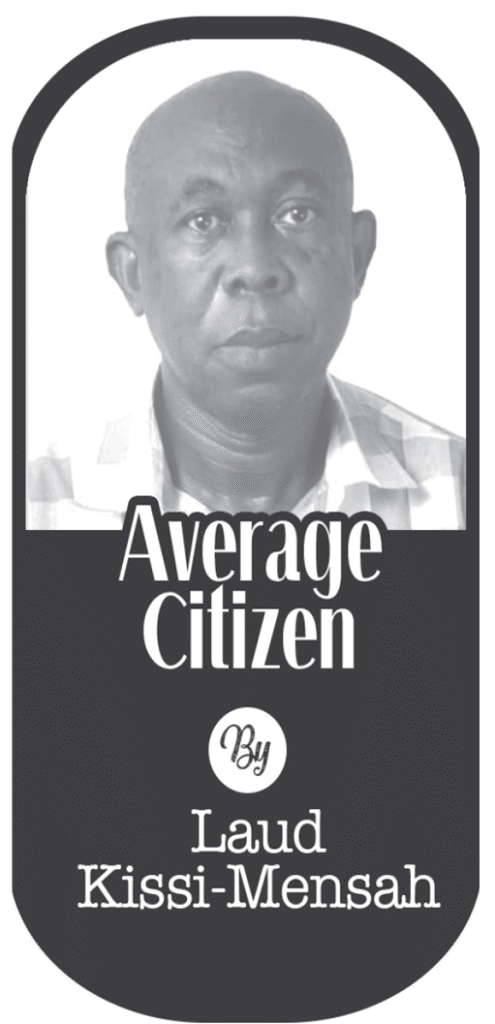Features
‘I survived a kidnapping but part of me died that day’

After a surge in the number of abductions in recent years, South Africa has one of the highest rates of kidnapping in the world, as Mpho Lakaje reports from Johannesburg.
Lesego Tau did not panic at first when a stranger opened the back door of her grey Mercedes C-Class and climbed in.
She had parked outside a shopping mall in Johannesburg and was focused on texting a friend before going in to grab a few items for a get-together that evening.
“In my rear view mirror, I was looking and still thinking: ‘This person is going to be so embarrassed when they realise they are in the wrong car’,” she told the BBC, recounting the events of last June.
But this was not an innocent mistake.
“Our gazes locked and I realised what was happening.”
This was a kidnapping.
Six months earlier, businessman Yasin Bhiku was grabbed in the driveway of his home, near Johannesburg, just after returning from the mosque.
CCTV footage that was widely seen on social media shows Mr Bhiku dressed in a blue T-shirt and black trousers calmly chatting to a friend.
Two men can be seen getting out of the car parked opposite. At first they stroll towards him, but then rush at him after Mr Bhiku realises what is going on and tries to flee.
He was overpowered and forced into the vehicle at gunpoint. The businessman was later found unharmed and rescued by the police.
Ms Tau, who runs her own cleaning company in Pretoria, also tried to flee once she had figured out that she was about to be abducted.
She said she tried opening the door of her car, but another man, dressed as a parking attendant in a hi-vis jacket, blocked the door.
The man in the back seat showed that he had a gun and ordered Ms Tau to drive out of the shopping complex.
Along the way, she was told to stop and someone else jumped into her car.
Four-hour ordeal
Once in the countryside, about 15km (nine miles) into the terrifying journey, the kidnappers ordered Ms Tau to stop.
A red car then arrived at the scene and someone got out, took her bank cards and forced her to reveal her security codes.
“The other people from the car… started going through all my different cards. They were withdrawing [money].”
At the same time, her captors were repeatedly hitting her on the head with the gun, ordering her to increase her withdrawal limit.
The ordeal went on for over four hours.
At one point she heard someone on the other end of a phone call say: “Just finish her off. We are done.”
“I made peace that they were going to kill me, but I thought, I need to fight. I have to fight. If they are going to kill me, I might as well fight,” Ms Tau said.
She fought her way out of the car, but the kidnappers grabbed her and started hitting and scratching her. She got away and ran across the road into the oncoming traffic.
This story and that of Mr Bhiku are not isolated.
In February, Police Minister Bheki Cele revealed that 2,605 kidnapping cases had been reported to the authorities in the last three months of 2021.
In the decade from 2010, kidnapping more than doubled in South Africa and there are now 10 kidnappings per 100,000 people, according to the South African think-tank the Institute for Security Studies. This is one of the highest rates in the world.
In 2018, Mr Cele promised to make dealing with kidnapping a priority.
Victims have been kept against their will either for a ransom, to have their bank accounts cleaned out or be sexually assaulted.
Some did not make it out alive, though it is not clear how frequent this outcome is.
In an attempt to deal with these kind of crimes, the police launched a kidnapping task team, combining intelligence gathering with tactical response.
Crime syndicates target South Africa
One thing that has been established is that kidnappers tend to work in teams and the abductions follow a pattern with each gang member having a set role, police spokesperson Col Athlenda Mathe told the BBC.
“The spotters are those that would follow the target. The pickers are those who move in to kidnap the victim.”
The kidnappers often drive high-performance vehicles and are usually heavily armed.
“Then we have the guards that would take over and keep the victim… until a ransom is paid.”
But in the background, there is a mastermind who does thorough research and pulls the strings.
“The kingpin would be someone who lives a high-end life and wouldn’t do the dirty job,” Col Mathe says.
These criminal syndicates have tentacles in countries like neighbouring Mozambique and as far afield as Pakistan.
They tend to mostly target wealthy business people with the means to pay a ransom, but some victims have been from low-income areas and children are not spared.
Private hostage negotiator Gérard Labuschagne says there has been an increase in very high-value cases. Ransoms can be set at up to $3m (£2.3m)
“Organised groups operating in Mozambique and other parts of Africa have now decided, for whatever reason, that South Africa is ripe for this type of crime and they’ve been committing it very successfully,” Mr Labuschagne says.
Some social commentators believe general lawlessness has made South Africa attractive to organised criminals from around the world.
In the face of public anger, the police acknowledge that more work needs to be done but Col Mathe says they have made progress.
“Since the identification of these syndicates, we have arrested 115 suspects, consisting of Pakistanis, Mozambicans as well as South Africans.”
One of the suspects is 43-year-old Faizel Charloos, who was taken into custody in March.
He is believed to be the mastermind behind a spate of recent kidnappings.
During police raids in several Johannesburg properties linked to him, drugs, cash and a high-powered vehicle were recovered.
Mr Charloos recently appeared in court, along with several others, on kidnapping charges. He has made no comment.
It emerged that he has dual citizenship in South Africa and Mozambique.
‘Police don’t rescue victims’
In a separate case in April, police successfully rescued a four-year-old girl who was snatched at a school in Johannesburg, by a woman pretending to be her childminder.
Her kidnappers had earlier demanded thousands of dollars for her safe return.
But four people were arrested when they arrived outside a shopping centre to collect the ransom.
Despite such breakthroughs, Mr Labuschagne is not convinced the police are winning.
“We have had one or two arrests. But in the overwhelming majority of these cases, the police don’t rescue the kidnapped victims from where they’ve been kept. They are released after a payment.”
Ms Tau was lucky that she managed to get away, but her kidnappers took $1,400 (£1,100).
The ordeal has damaged her psychologically and left her family distressed.
“My father is not a man who cries, but he got teary. He kept on feeling like he could have protected me.
“There’s still a part of me that actually died on that day.”
Source: bbc
Features
Ghana becoming a developed nation — Part 4
Having initiated programs to ensure a foundation of morality, the next step is to have a picture of what success looks like. I keep saying that if you do not have a destination in mind when travelling, you can never arrive.
We therefore as a people, need to set up a development plan which all parties shall ascribe to so that no matter which party is in government, the execution of the plan will not be derailed.
This is the only way that we can make a headway in our developmental agenda. Once we have a plan we are following, it becomes a guiding tool to arrive at the destination we have set for ourselves. It becomes a project that given the necessary key milestones, will help us in monitoring progress.
The next step is to focus on pillars of development i.e. education, health, agriculture and the economy.
The common characteristic of developed countries is the level of education of its citizens.
A highly educated population provides readily available human resource for industrial growth.
A highly qualified population has the potential to innovate, creating value added products for export.
A healthy population is necessary for development. Proactive measures that can prevent epidemics for instance, must be put in place to ensure a healthy populace.
This would require a deliberate investment in health infrastructure as well as training of professionals in the health sector.
Food must be available and must also be affordable and there policies that can ensure the achievement of this objective must be vigorously pursued.
Agro-processing must be prioritised if not completely eliminate post harvest losses and also provide goods for export as part of the effort to stabilize currency.
The power of a nation depends largely on its economic growth. The reason why countries like the US and China wield a lot of influence in the world is because of their wealth.
The way out of poverty as a country, is to industrialise. We need to focus on deliberate effort to promote indigenous control over our natural resources so as to reduce repatriation of huge foreign currency out of the country.
Such initiatives will provide or make available funds for entrepreneurs to access for industrialisation. If we do not prioritise industrialisation, we will permanently not enjoy real independence as a nation because we will have to depend on them to assist in funds for our budget deficit.
Whoever controls how you run your budget literary controls you and therefore the countries who provide budgetary support, controls us. We need to get out of this situation so we can be truly.
The industrialisation cannot be established without companying infrastructure and therefore infrastructure development must be taken seriously into account.
Local expertise must be sought in the infrastructural development. The use of local expertise will help create jobs for the teeming youth the universities churn out every year.
I hope to complete this series next weekend. God bless.
NB: ‘CHANGE KOTOKA INTERNATIONAL AIRPORT TO KOFI BAAKO INTERNATIONAL AIRPORT’
Join our WhatsApp Channel now!
https://whatsapp.com/channel/0029VbBElzjInlqHhl1aTU27
Features
The impact of emotionalsurgery and emotional elysiumon presidential performance
AS the world becomes increasingly complex, the role of a president has become more demanding than ever.
The pressure to make life-altering decisions, manage crises, and maintain a sense of calm and composure can take a toll on a president’s mental health.
In recent years, innovative approaches like emotional surgery and emotional elysium have gained attention for their potential to support leaders in managing stress and promoting emotional well-being.
Understanding emotional surgery
Emotional surgery is a groundbreaking approach that utilises art to promote relaxation and reduce stress.
This technique involves the use of colors, geometric shapes, and abstract objects to communicate with the brain and induce a state of calmness.
By leveraging the brain’s ability to process visual information, emotional surgery can help individuals manage anxiety and stress, promoting a sense of calmness and well-being.
The benefits of emotional elysium
Emotional elysium refers to practices that promote emotional well-being and resilience.
This approach focuses on cultivating positive emotions such as gratitude, compassion, and love, to improve overall well-being.
For presidents, emotional elysium can be particularly beneficial in managing the stresses of office and promoting emotional balance.
By incorporating emotional elysium practices into their daily routine, presidents can improve their emotional regulation, increase their resilience, and enhance their overall well-being.
The impact on presidential performance
Both emotional surgery and emotional elysium have the potential to significantly impact a president’s performance.
By managing stress and promoting emotional well-being, presidents can:
- Improve decision-making: Emotional surgery and emotional elysium help presidents make more informed, rational decisions, rather than reacting impulsively to stress or emotions.
- Enhance leadership: Leaders who prioritise emotional well-being are better equipped to build strong relationships with their team and the public.
- Increase resilience: Emotional elysium practices, such as mindfulness and meditation, build resilience, enabling presidents to cope better with challenges and setbacks.
Prof. Agyeman Badu Akosa’s endorsement
Prof. Agyeman Badu Akosa, a respected figure in the medical field, has endorsed emotional surgery as a valuable tool for promoting relaxation and reducing stress.
According to him, emotional surgery can reduce anxiety, improve emotional regulation, and enhance overall well-being.
Conclusion
In conclusion, emotional surgery and emotional elysium are two innovative approaches that have the potential to significantly impact a president’s performance.
By prioritising emotional well-being and exploring these approaches, presidents can improve decision-making, enhance leadership, and increase resilience.
As global challenges become more complex, it is essential for presidents to safeguard their mental health — and these techniques offer a promising solution.
Recommendations
- Presidents should prioritise their emotional well-being: Recognising the importance of emotional balance allows leaders to manage stress effectively.
- Emotional surgery and emotional elysium should be considered: These approaches may offer promising solutions for high-end executives whose emotional well-being affects their performance.
By embracing emotional well-being and exploring innovative interventions, presidents can optimise performance, build stronger relationships, and promote overall well-being.
Join our WhatsApp Channel now!
https://whatsapp.com/channel/0029VbBElzjInlqHhl1aTU27






